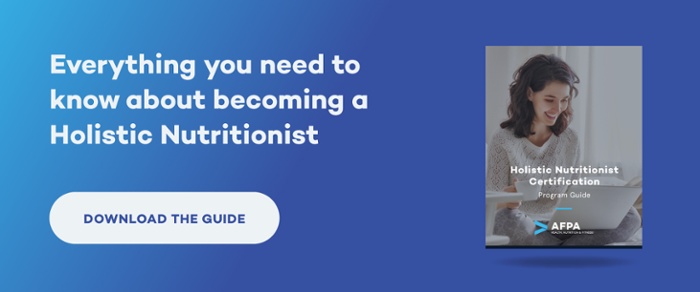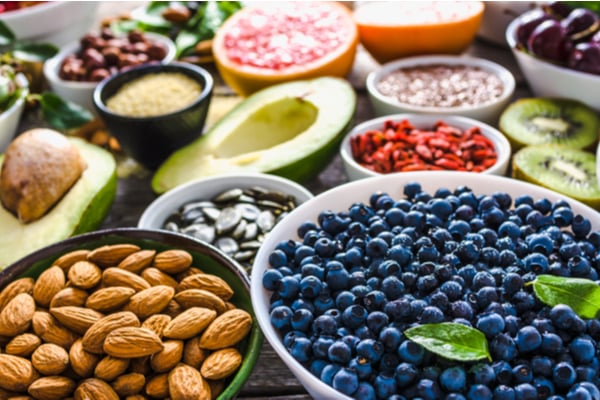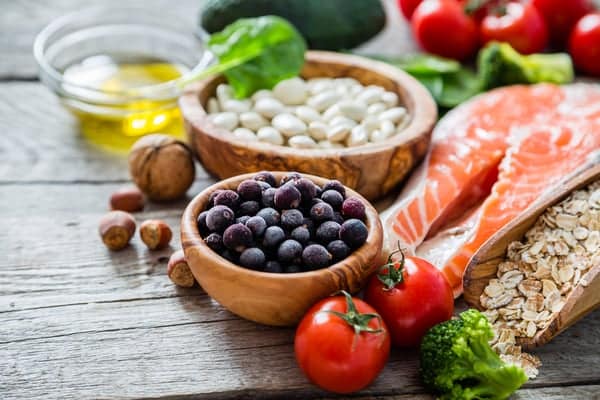What do you think about when you hear the term “processed foods”?
Does an image of steamed carrots come to mind? Or do you think of foods that come in shiny, crinkly bags?
If your answer is closer to the former, you are correct. If your answer is the latter, you are also correct.
Processed foods are any food on which humans have purposefully made a mechanical or chemical change for the purpose of nutrition, taste, or shelf life.
This means that actions such as,
- Cooking
- Drying
- Peeling or cutting
- Cleaning
…are all processes that make foods easier to digest, safe, longer-lasting, and enjoyable.
So, how do we differentiate between the processing that steamed carrots go through and that which bagged chips go through?
The term ultra-processed foods came about to differentiate between food that has undergone relatively simple mechanical and physical changes from those that have been industrialized, have possibly had natural nutritional qualities stripped away, and include a long list of chemical additives. Foods that have only undergone basic processes, like cooking, cleaning, and drying, are sometimes called minimally processed foods.
In this article, we provide information about what defines ultra-processed foods and summarize the research on the health effects of consuming them regularly.
Become a Certified Holistic Nutritionist Online in 6 Months or Less
What Are Ultra-Processed Foods?
Convenience foods and junk foods are popular terms used to refer to ultra-processed foods. When people use these terms, they are generally referring to edible substances that, when they make up a significant portion of an overall diet, can lead to diminished health.
The scientific term for junk food or convenience foods is Ultra-Processed Foods (UPF). The term refers to foods that have the qualities that lead to diminished health when they make up a large part of the diet.
Researchers define UPF as follows:
“Ultra-processed foods are formulations of ingredients, mostly of exclusive industrial use, that result from a series of industrial processes (hence ‘ultra-processed).”
In other words, ultra-processed foods contain ingredients that are usually only found on food ingredient labels but that you won’t be able to buy on their own in supermarkets.
Those ingredients (called additives or preservatives) usually result from a series of industrial processes.
Additives make the foods shelf-stable for long periods of time; enhance or improve taste, color, appearance, or texture; or improve nutritional value.
Additionally, different forms of added sugar, fats and oils, and salt make these foods highly palatable.
The Making of Convenience Foods
Possible trigger warning: This section includes a detailed description of the processing of vegetable and animal parts.
A group of researchers set out to describe the general process that places ultra-processed foods under a single umbrella term. We summarize this process as follows:
- Whole foods are fractionated into sugars, oils and fats, proteins, starches, and fiber. The initial food products are usually high in starch and sugar, like corn, wheat, soy, sugarcane, or beets. Other common whole products are parts of animal carcasses.
- Whole foods and products go through a first process. Parts of animals may be ground or pureed. Vegetable products may go through hydrolysis, hydrogenation, or other chemical modifications.
- Resulting food substances are assembled with little, if any, whole foods, using techniques such as extrusion, molding, and pre-frying.
- Colors, thickeners, glazing agents, emulsifiers, carbonating agents, flavors, flavor enhancers, and gelling agents are added to make the food palatable or hyper-palatable and visually appetizing. In other words, they make your mouth and brain say, “Yum!”
- Chemicals and other ingredients are added to keep bacteria and fungi from growing in the foods so that they remain innocuous (free from pathogens) for significant periods of time after manufacturing.
- Food products are placed in sophisticated packaging with synthetic materials that serve a dual purpose: safety and marketing.
The Health Effects of Diets Rich in Ultra-Processed Foods (Convenience Foods)
From the perspective of long-term physiological health outcomes, there are several research-backed reasons why you may want to support your clients in limiting, but not necessarily eliminating, the consumption of ultra-processed foods.
- The final processes that ultra-processed foods undergo make the foods palatable and hyper-palatable. hyper-palatable foods may trigger addictive or compulsive eating behaviors.
- Ultra-processed foods are very energy-dense and high in added sugar, saturated fat, and sodium and lower in fiber. This may be of particular concern in people with metabolic disorders like diabetes, digestive disorders, PCOS, hypertension, hypercholesterolemia, and others.
- Diets high in ultra-processed foods exceed the upper limits for fat, saturated fat, free sugars, and sodium, and they do not meet fiber needs. A diet composed mostly of these foods may lead to nutritional imbalances.
- Diets high in ultra-processed foods are more likely to be deficient in protein, fiber, vitamin A, vitamin C, vitamin D, vitamin B6, vitamin B12, niacin, thiamine, and riboflavin, as well as zinc, iron, magnesium, calcium, phosphorus, and potassium.
Decreasing the proportion of the diet made up of ultra-processed foods and increasing the proportion of the diet made up of meals made with processed culinary ingredients (like dried herbs and ground spices) on minimally processed foods could significantly improve the quality of the diet.
Should We Limit the Consumption of Ultra-Processed Foods?
Food choice is not the only factor that influences what your clients eat.
Food access, economic limitations, and the complexities of the social experience of eating all influence eating behaviors.
Inducing shame is an ineffective method of promoting health behavior change. Remember that foods are not inherently “good” or “bad.” So, avoid villainizing foods or eating habits when working with clients.
Foods are just foods, regardless of how they are made or produced. Eating a bag of chips or a cream-filled doughnut every once in a while will generally not cause harm to people unless they are living with a metabolic condition like diabetes.
While consuming large quantities of certain nutrients, not getting enough of other nutrients, or eating certain types of foods regularly does influence our health status, the problem is one of the complexities of eating behaviors, not a problem of the food itself.
The adoption and maintenance of eating behaviors are very complex. People who have eating patterns that are high in ultra-processed foods are not doing so to intentionally cause harm to themselves.
Psychological factors like trauma, social factors like discrimination and a lack of representation, and environmental factors like food deserts and food insecurity all affect how people make decisions regarding what to eat. These issues disproportionately affect marginalized communities more than other populations.
As coaches who specialize in supporting clients in achieving and maintaining health behavior change, it is important to be mindful of the complexities of nutrition and eating. Utilizing techniques like trauma-informed motivational interviewing can reveal realistic ways to help clients make choices that will improve their physical and mental health in the long term.
Main Takeaways
When you talk to your clients, words matter. Utilizing the term processed foods, when you really mean ultra-processed foods, could cause confusion.
It is important to make note of the potential effects of having a diet made up largely of processed foods. But, it is also important to be sensitive to the environmental and sociocultural factors that influence your clients’ choices.
Remember that there are no “good” or “bad” foods. Foods are just foods. Ultra-processed foods, or convenience foods, may be the primary way that your clients are able to feed themselves and their families due to a lack of time or access. It is important to be open to learning about barriers that limit access to less processed and fresh foods and, together with your client, construct realistic ways to meet their family’s needs.
References:
- https://www.researchgate.net/profile/Geoffrey_Cannon/publication/331046924_Ultra-processed_foods_What_they_are_and_how_to_identify_them/links/5c65548f299bf1d14cc53471/Ultra-processed-foods-What-they-are-and-how-to-identify-them.pdf
- https://www.ingentaconnect.com/content/ben/cdar/2011/00000004/00000003/art00003
- https://www.cambridge.org/core/journals/public-health-nutrition/article/increasing-consumption-of-ultraprocessed-foods-and-likely-impact-on-human-health-evidence-from-brazil/C36BB4F83B90629DA15CB0A3CBEBF6FA
- https://www.sciencedirect.com/science/article/abs/pii/S0195666316306973
- http://event.capconcorp.com/wp/hpog-2016/wp-content/uploads/sites/7/2016/09/Schilling_AdverseChildhoodExperiencesandAdultHealth-508.pdf
- https://www.sciencedirect.com/science/article/pii/S2352250X15001530
- https://link.springer.com/referenceworkentry/10.1007%2F978-1-4020-9160-5_148




